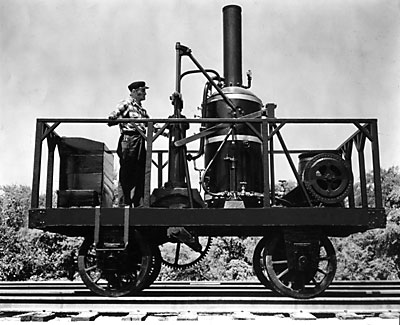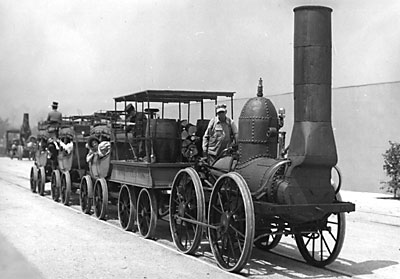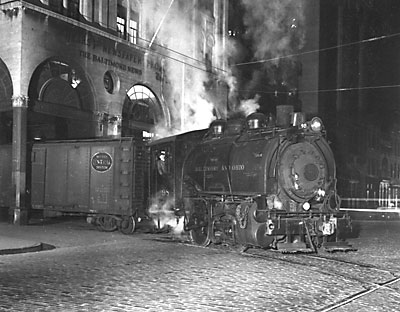Lighter 0-4-0s that could manage the rickety track of America’s earliest railroads were quickly built for the D&H and other new lines. At first the engines came from England, but within a few short years America developed its own locomotive industry. Thereafter, domestic companies became the dominant suppliers to U.S. railroads.
These early engines were built with both vertical and horizontal boilers. Many of them, with names such as Tom Thumb, DeWitt Clinton, and Best Friend of Charleston became synonymous with American railroad history.
This was a problem for the 0-4-0. It was an engine that needed good track – and good track was something in short supply.
The 0-4-0 had an unequalized suspension system that could not transfer weight from one wheel to another as the undulating track dipped or rose. Four pedestals attached to the locomotive frame independently supported the ends of each axle. On wobbly track, this was akin to placing a four-legged stool on uneven ground – it was unstable. Locomotive speeds had to be restricted to avoid derailments.
To overcome this drawback, the 4-2-0 and then 4-4-0, were developed. These locomotives employed a better suspension system that could handle the poor track at higher speeds. With their introduction in the late 1830s, the 0-4-0 was phased out as a road engine.
However, around 1870 the 0-4-0 reappeared, this time as a switch engine. These engines were newly designed locomotives, with horizontal boilers and an improved suspension system capable of handling irregular track. They readily found a home in railroad yards.
At the height of their popularity over 1,200 were in service.
As trains grew heavier, the 0-4-0 again lost favor to another engine with more power, the 0-6-0, which by the turn of the century had become the standard yard engine. While it could not compete with the 0-6-0 in tractive effort, the 0-4-0 was still very flexible and could accommodate tight curves and clearances.
Smaller locomotive builders such as Porter and Davenport built many 0-4-0 tank engines for short lines and for private industrial applications. Several of these locomotives lasted late into the diesel era.
In all, about 1500 North American 0-4-0 locomotives were built.
















